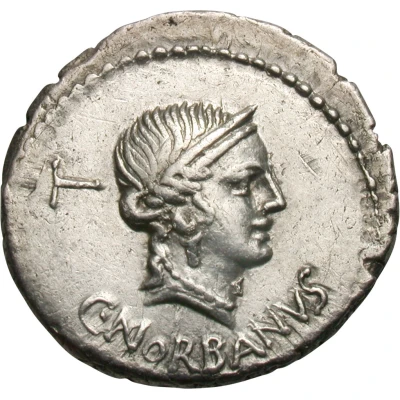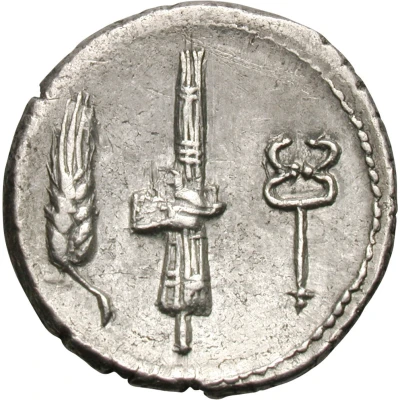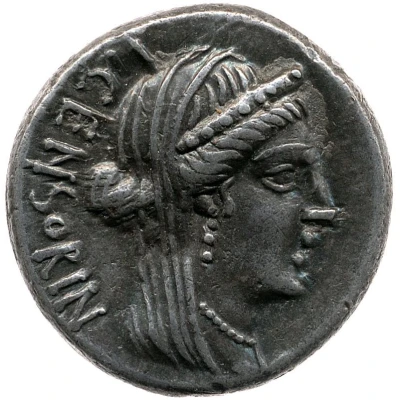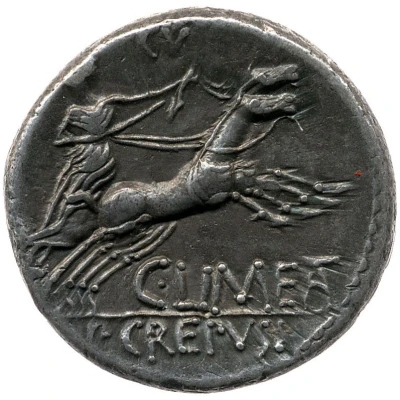
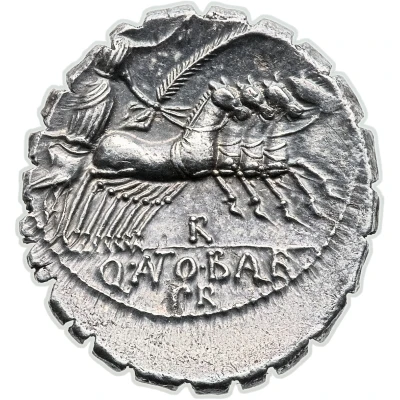

Denarius serratus Antonia: Quintus Antonius Balbus; S•C / Q•ANTO•BALB PR 83 BC - 82 BC
| Silver (.950) | 3.85 g | 18 mm |
| Issuer | Rome › Roman Republic (509 BC - 27 BC) |
|---|---|
| Period | Republic (509 BC - 27 BC) |
| Type | Standard circulation coin |
| Years | 83 BC - 82 BC |
| Value | Denarius (1) |
| Currency | Denarius of 16 Asses (141 – 27 BC) |
| Composition | Silver (.950) |
| Weight | 3.85 g |
| Diameter | 18 mm |
| Shape | Round (irregular) |
| Technique | Hammered |
| Orientation | Variable alignment ↺ |
| Demonetized | Yes |
| Updated | 2024-10-06 |
| Numista | N#66101 |
|---|---|
| Rarity index | 81% |
Reverse
Winged Victory in quadriga marching right, holding wreath in right hand and palm-branch and reins in left hand; sometimes, control-mark below.
Moneyer mark in exergue with ANT and AL in monograms.
Script: Latin
Lettering:
R
Q•ANTO•BALB
PR
Unabridged legend: Quintus Antonius Balbus Prætor
Translation: Quintus Antonius Balbus praetor
Edge
Serrated
Comment
The gens Antonia was a Roman family of great antiquity, with both patrician and plebeian branches. The first of the gens to achieve prominence was Titus Antonius Merenda, one of the second group of Decemviri called, in 450 BC, to help draft what became the Law of the Twelve Tables.
This coinage was struck to finance the anti-Sullan party on the eve of the Battle of the Colline Gate where the Marianists were defeated by Sulla before being proscribed and eliminated.
For this type, 340 obverse dies and 378 reverse dies were listed for five different varieties.
These denarius were serrated to prevent counterfeiting.
Interesting fact
One interesting fact about this coin is that it features a rare portrait of Quintus Antonius Balbus, a Roman politician and military leader, on the obverse (front side), while the reverse (back side) depicts a serrated edge, which gives the coin its name "Denarius serratus." This unique design was used to prevent counterfeiting and to make the coin easily identifiable.
